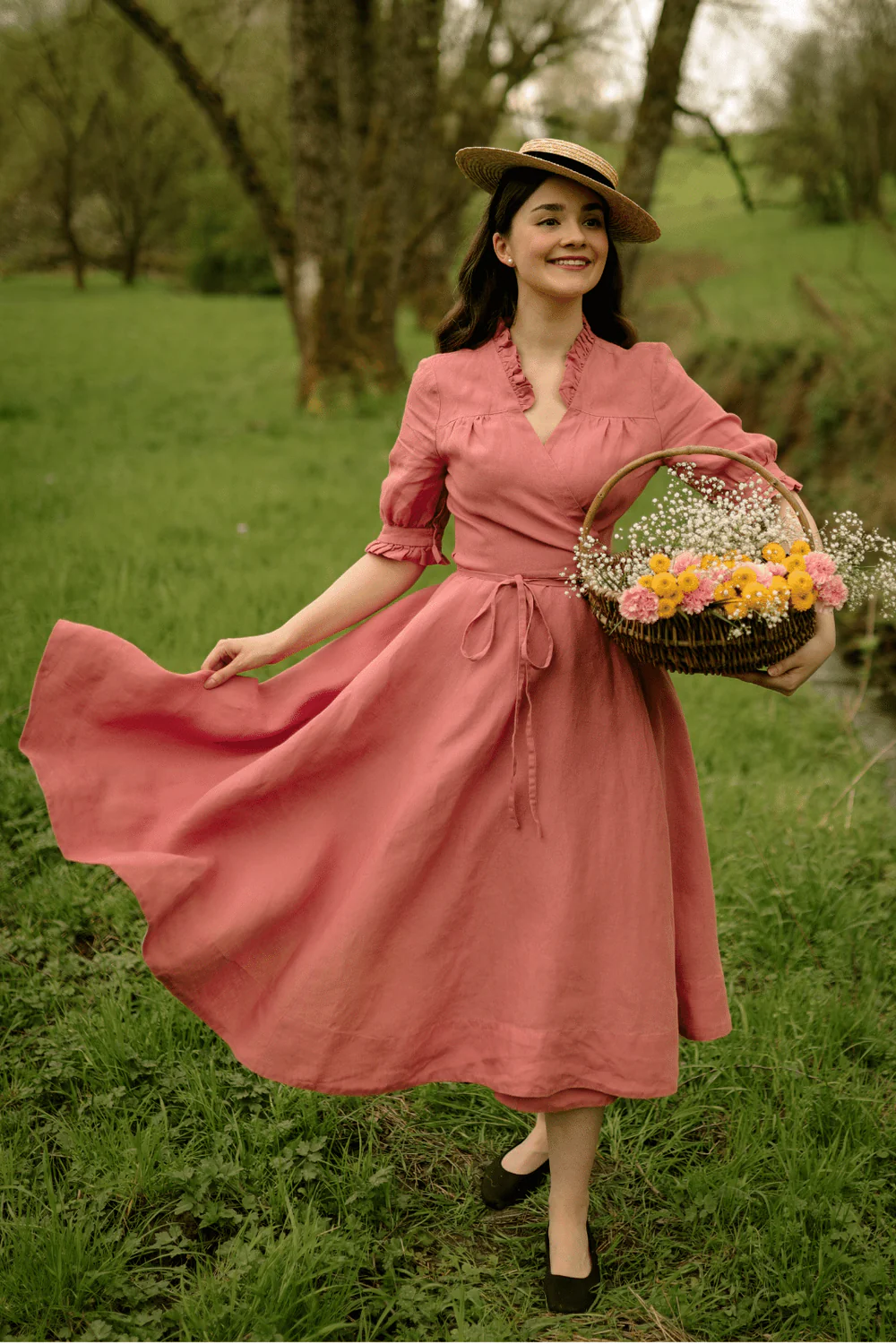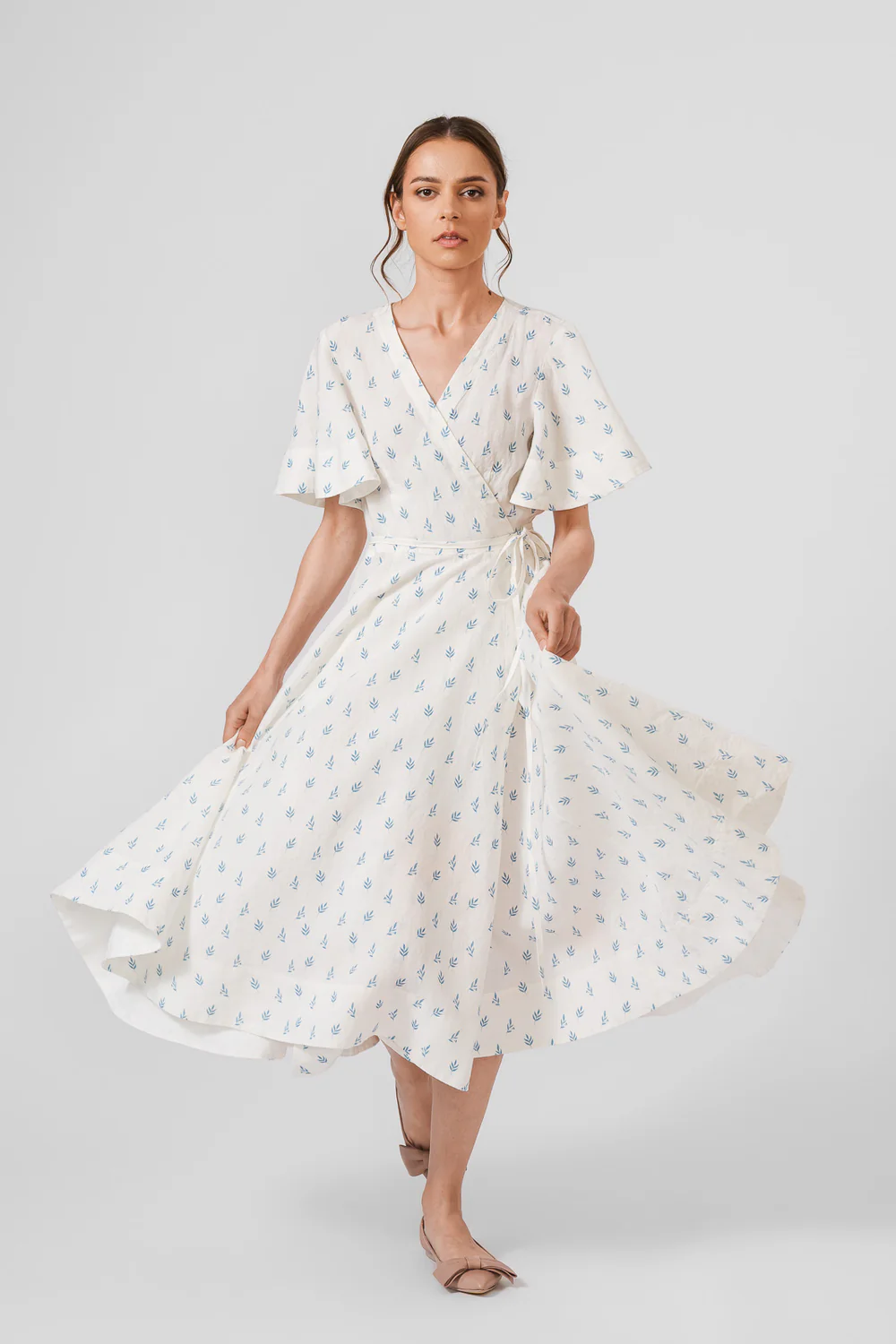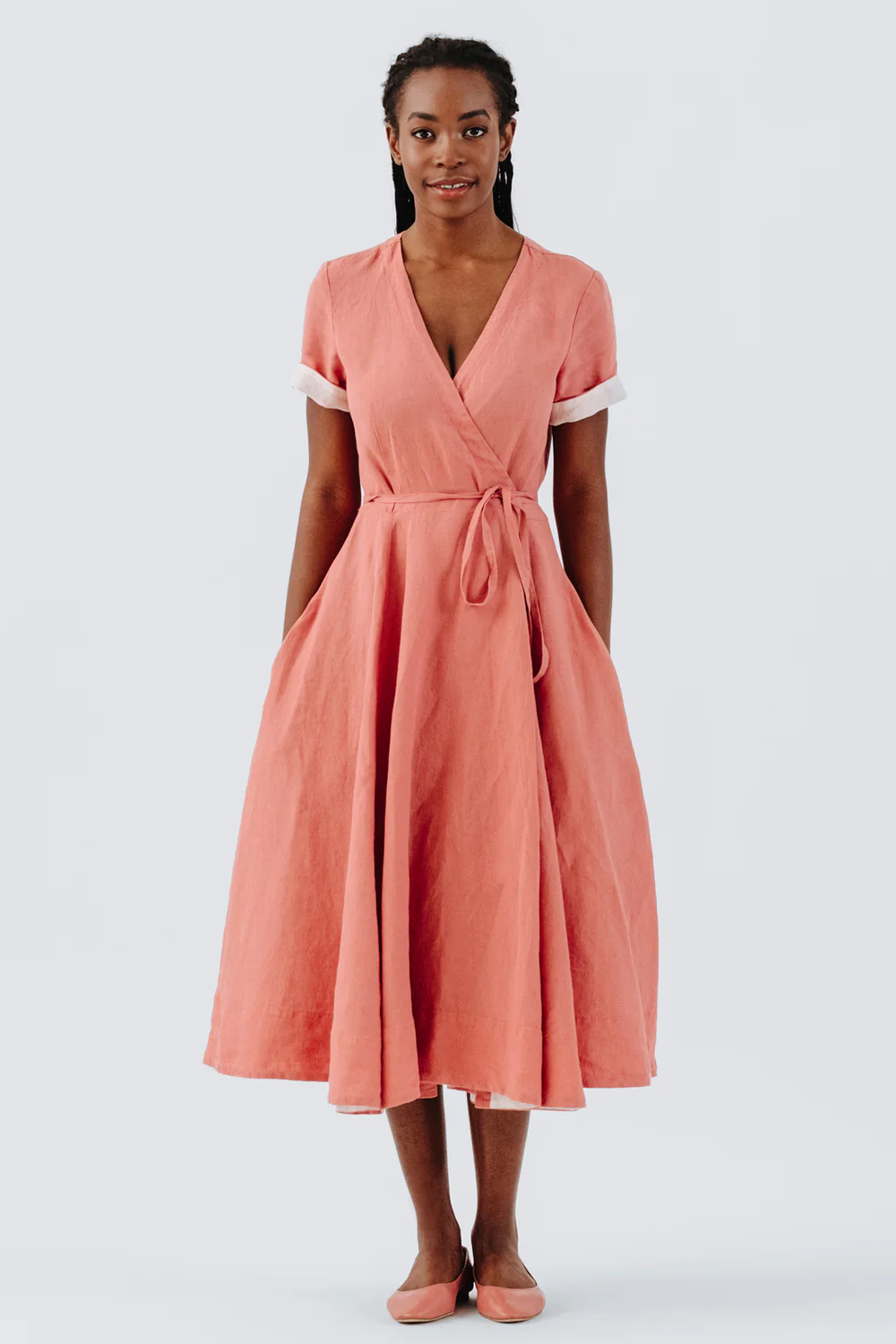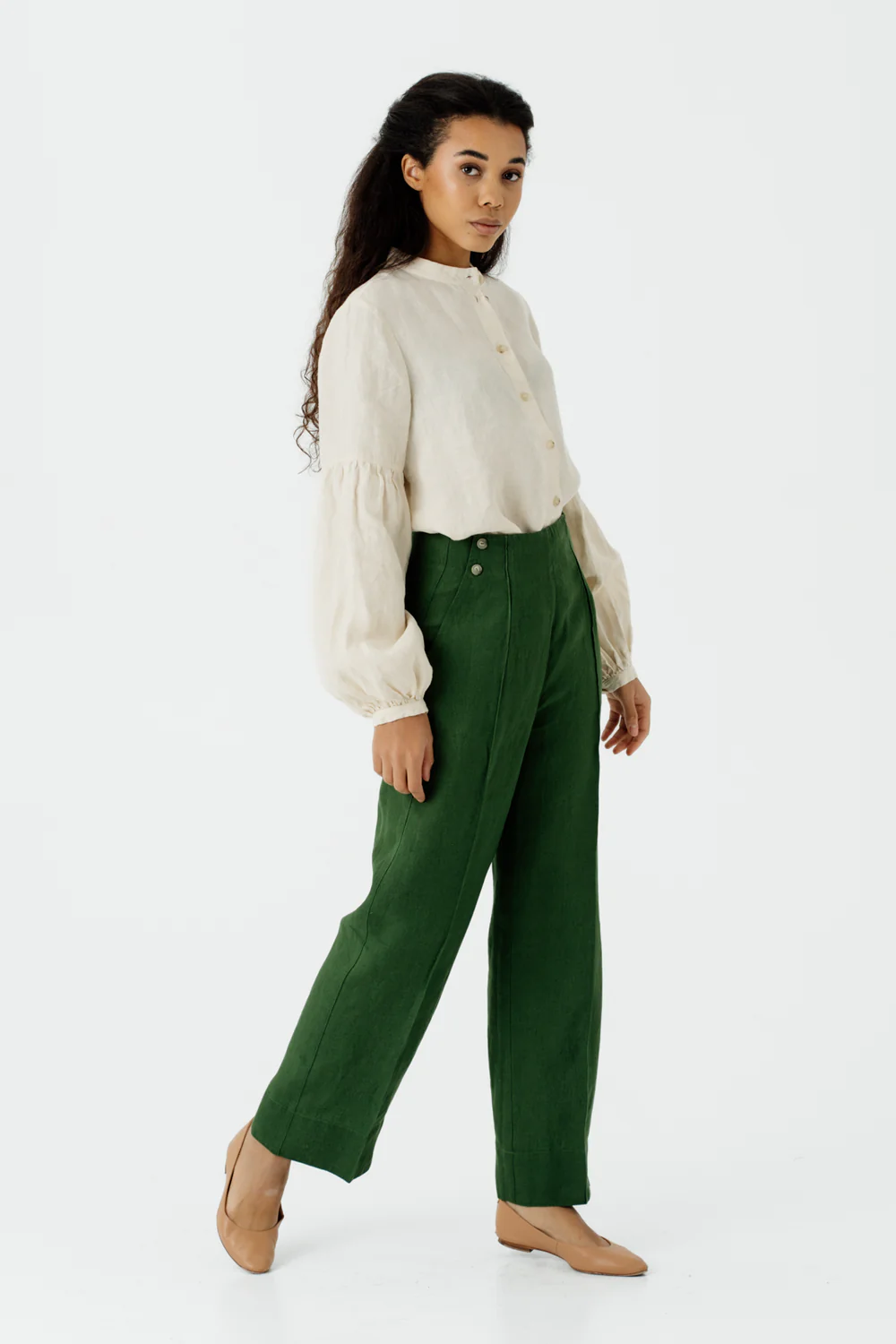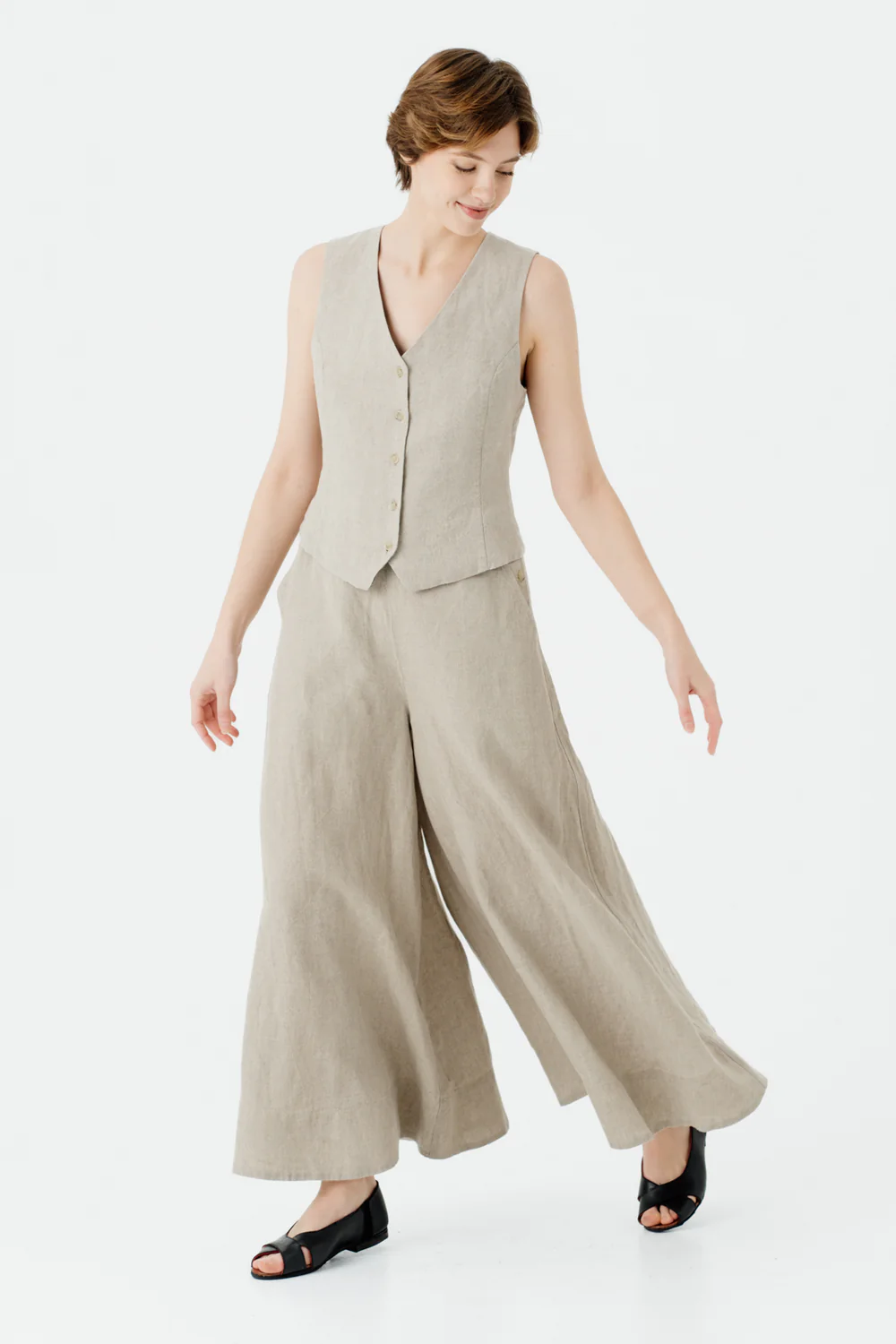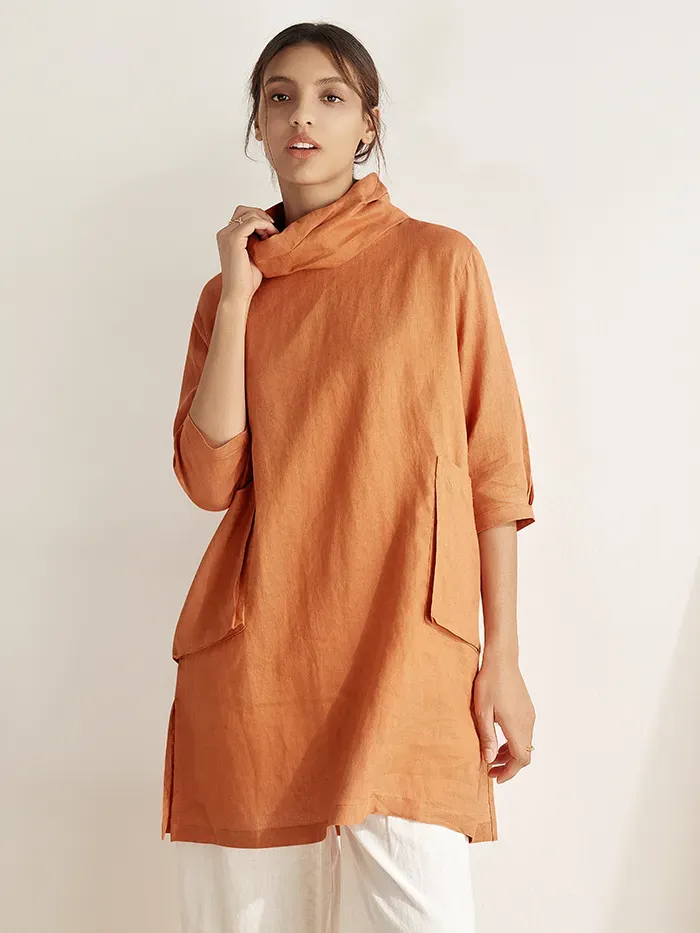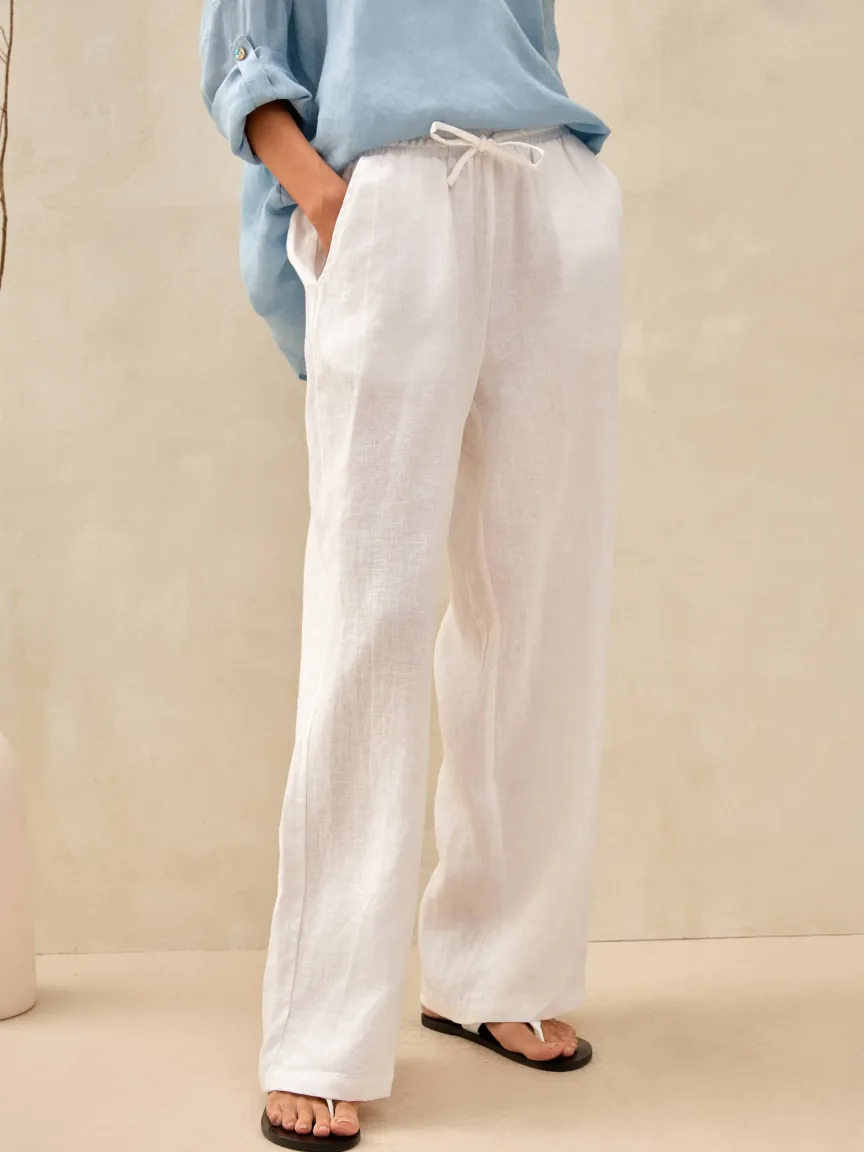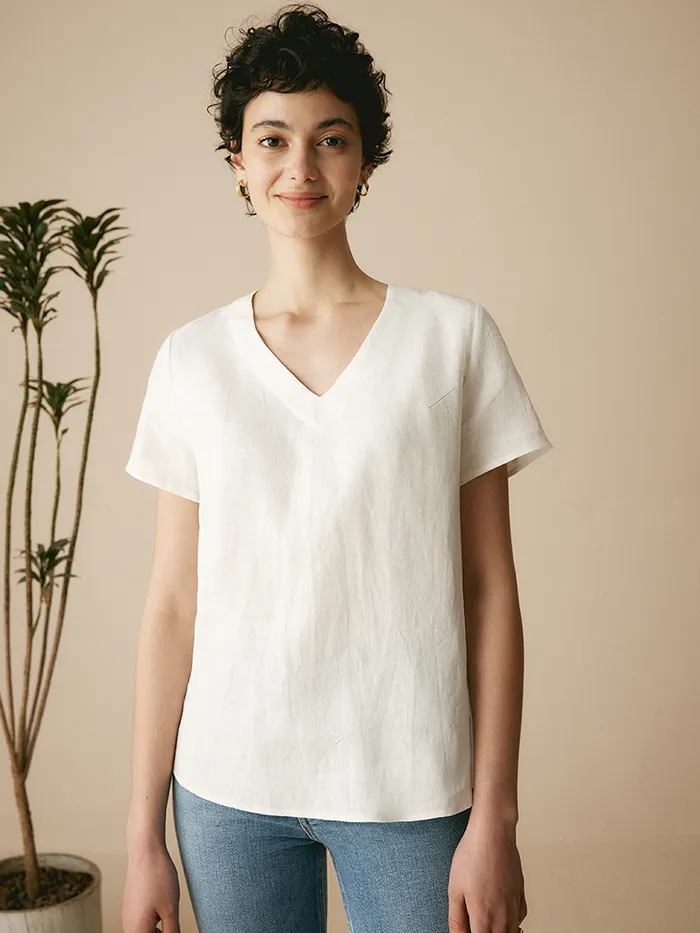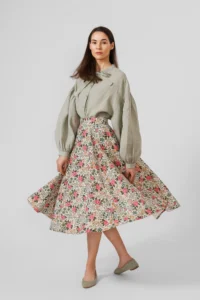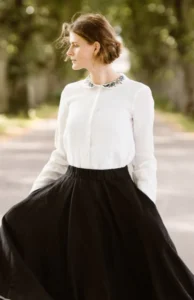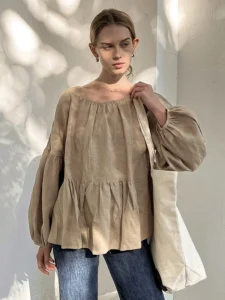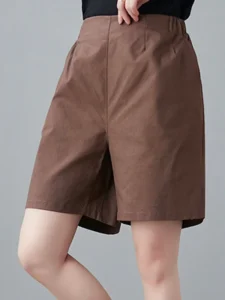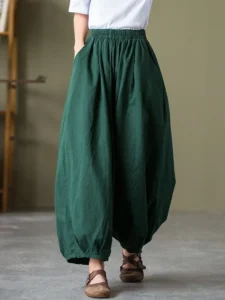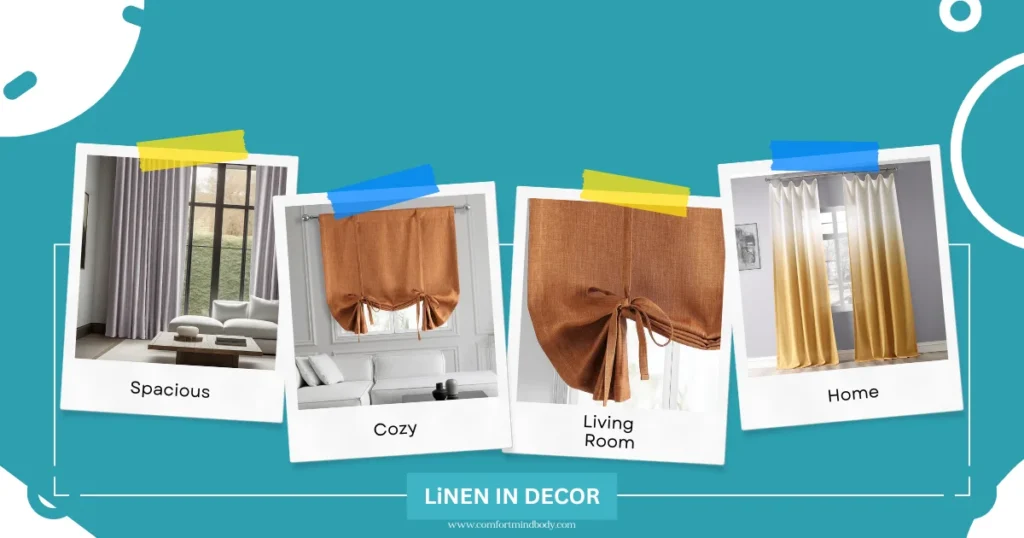Table of Contents
ToggleIntroduction:
In the world of fashion, linen holds a special place. This natural fabric, derived from the flax plant, has been cherished for centuries. Its popularity is not without reason. So, what are the Benefits of Wearing Linen?
Linen offers a multitude of benefits that set it apart from other materials. From its breathability to its durability, linen is a fabric that truly delivers. However, the advantages of linen extend beyond its physical properties.
Linen is also a champion of sustainability. In a world increasingly conscious of environmental impact, linen stands out as an eco-friendly choice.
This article delves into the many benefits of wearing linen. We’ll explore why this fabric has stood the test of time. Plus, we’ll also discuss how linen compares to other fabrics, such as cotton.
Whether you’re a fashion enthusiast or an eco-conscious consumer, this comprehensive guide to linen is for you. Join us as we unravel the wonders of this remarkable fabric.
Historical and Botanical Overview
Linen has a rich history that spans thousands of years. It is one of the oldest textiles in the world, with evidence of its use dating back to ancient civilizations. The Egyptians, for instance, valued linen for its purity and used it for mummification.
In the Middle Ages, linen was a common fabric for undergarments, valued for its comfort and hygiene. Fast forward to today, and linen continues to be a beloved fabric in fashion and home decor. But what exactly is linen?
Linen is a natural fabric made from the fibers of the flax plant. The process of turning flax into linen is labor-intensive, which contributes to the fabric’s premium status. Here are some key facts about the flax plant and the production of linen:
- Flax is a resilient plant that can grow in poor soil conditions.
- The entire flax plant can be used, leaving no waste.
- Flax requires less water and pesticides than cotton, making it a more sustainable crop.
- The strength of linen fibers increases when wet, unlike other materials that weaken.
- Linen is fully biodegradable when it is not dyed.
Understanding the origins of linen and its production process helps us appreciate its unique qualities. In the following sections, we’ll delve deeper into the benefits of this remarkable fabric.
Linen vs. Cotton: A Comparative Analysis
When it comes to natural fibers, cotton is often the first that comes to mind. However, linen holds its own in comparison with cotton, offering several advantages. One of the most notable differences is in their breathability.
Linen is highly breathable, making it ideal for warm and humid climates. This is due to the structure of linen fibers, which allow air to move freely, keeping the wearer cool.
Cotton, while also breathable, does not offer the same level of air permeability as linen. Another key difference lies in their moisture-wicking abilities. Linen can absorb up to 20% of its weight in moisture before it feels damp. This makes it a great choice for hot weather or when you sweat.
Cotton, on the other hand, tends to hold moisture, which can make it feel heavy and damp when wet. In terms of durability, linen again comes out on top. Linen fibers are stronger than cotton fibers, which contributes to the longevity of linen garments.
High-quality linen can last for decades, while cotton tends to wear out more quickly. However, it’s worth noting that linen is often more expensive than cotton due to its labor-intensive production process.
But considering its durability and longevity, linen can be seen as a worthwhile investment. In the next sections, we’ll explore more of these benefits in detail.
The Breathability and Thermoregulation of Linen
Benefits of Wearing Linen
One of the standout qualities of linen is its breathability. This is largely due to the structure of linen fibers, which are hollow and allow air to move freely. This breathability makes linen an ideal fabric for warm and humid climates.
It allows heat to escape from the body, helping to keep the wearer cool. In addition to its breathability, linen also excels in thermoregulation. This means that it can help regulate the body’s temperature, keeping the wearer cool in summer and warm in winter.
This is due to linen’s heat conductivity, which is higher than that of other fabrics. Linen can quickly dissipate heat, helping to reduce the body’s temperature in hot weather.
On the other hand, in cooler weather, linen’s insulation properties help retain body heat, keeping the wearer warm. This combination of breathability and thermoregulation makes linen a versatile fabric that can be worn year-round.
In the next section, we’ll delve into another of linen’s standout qualities: its ability to manage moisture.
Moisture Management: Benefits of Wearing Linen Clothes!
Benefits of Wearing Linen
Linen’s ability to manage moisture is another key benefit. This is because of its hygroscopic properties. These properties let it absorb and release moisture quickly. In fact, linen can take in up to 20% of its weight in moisture before it feels damp.
This is significantly more than cotton, which can only absorb about 7% of its weight. This makes linen an excellent choice for hot and humid climates, as it can help keep the wearer dry and comfortable.
In addition to absorbing moisture, linen also dries quickly. This means that even if you do sweat, your linen clothing won’t stay damp for long. In the next section, we’ll explore another of linen’s key benefits: its durability and longevity.
Linen's Durability and Longevity
Linen’s durability is one of its most celebrated attributes. This natural fiber is known for its exceptional strength and longevity, outperforming many other textiles. In fact, linen is about 30% stronger than cotton.
This strength is even more pronounced when the fabric is wet, as linen becomes stronger when damp. This durability translates into a longer lifespan for linen garments.
With proper care, high-quality linen clothing can last for decades, making it a sustainable choice for your wardrobe.
In the next section, we will explore the health benefits of linen. We will focus on its hypoallergenic properties and how gentle it is on the skin.
Hypoallergenic and Gentle on Skin: The Health Benefits of Wearing Linen
Benefits of Wearing Linen
Linen’s health benefits are another compelling reason to choose this fabric. One of the most significant is its hypoallergenic properties. Linen is naturally hypoallergenic, making it an excellent choice for people with sensitive skin or allergies.
This is because linen is resistant to bacteria, mold, and mildew, which can cause skin irritation and allergic reactions. In addition, linen’s natural fibers do not contain any allergenic substances, reducing the risk of skin irritation.
This makes linen a safe choice for children’s clothing and for those with sensitive skin conditions. Linen is also gentle on the skin. Its natural fibers are smooth and do not cause friction, making linen clothing comfortable to wear.
In the next section, we will look at how linen is eco-friendly and sustainable. This makes it a good choice for responsible consumers.
Disadvantages of Linen:
Linen might be a go-to fabric for that airy summer vibe, but it has its downsides. To start, it wrinkles easily. This can make you look less polished if you don’t iron it often. Plus, while it feels cool and breathable, it can be quite rough on the skin, especially if you’re not used to it. And let’s not even talk about how it shrinks after a wash.
If you are not careful, your favorite linen shirt might fit your pet instead! Finally, it can be pretty pricey, making it a splurge rather than an everyday staple. Overall, while it’s lovely for warm weather, those little quirks can be a hassle to deal with.
Linen's Eco-Friendly and Sustainable Credentials
Benefits of Wearing Linen
Linen’s eco-friendly and sustainable credentials are a major part of its appeal. Linen is made from the flax plant, a crop that requires less water and fewer pesticides than cotton. This makes the production of linen less harmful to the environment.
In addition, the entire flax plant can be used in the production process, leaving no waste. This contributes to linen’s reputation as an eco-friendly fabric. Linen is also fully biodegradable when it is not dyed or treated with harsh chemicals.
This means that linen clothing can be composted at the end of its life, reducing waste in landfills. The production of linen also uses less energy than the production of synthetic fabrics.
This lower energy consumption contributes to linen’s smaller carbon footprint. In the next section, we’ll delve into the versatility of linen in fashion, from casual wear to formal attire.
Linen shirts, Linen Pants, Linen Tunic:
The Versatility of Linen in Fashion
Linen’s versatility in fashion is another reason for its popularity. From casual wear to formal attire, linen can be used to create a wide range of clothing items.
This includes everything from breezy summer dresses and comfortable shirts to elegant suits and sophisticated evening wear. Linen’s natural colors, which include shades of ivory, ecru, tan, and grey, add to its aesthetic appeal.
These colors can easily be incorporated into any wardrobe, providing a neutral base for a variety of outfits. Linen comes in natural colors, but it can also be dyed in many shades. This gives it more options in fashion.
In the next section, we’ll discuss how to care for linen clothing to ensure its longevity.
Linen's Low Maintenance and Care Guide
Benefits of Wearing Linen
Despite its luxurious reputation, linen is surprisingly low maintenance. One of the benefits of linen is that it becomes softer with each wash. This enhances its comfort over time, making it a fabric that truly gets better with age.
Linen can be hand-washed or machine-washed, adding to its practicality. It’s important to note that linen’s strength increases when wet, unlike other materials that weaken.
This makes it less likely to tear or wear out from washing. In the next section, we’ll explore the unique aesthetic appeal of linen.
Linen's Unique Aesthetic Appeal
Benefits of Wearing Linen
Linen’s aesthetic appeal lies in its natural and understated elegance. The fabric’s natural colors include shades of ivory, ecru, tan, and grey. These neutral tones can add a sophisticated touch to any wardrobe.
Linen’s texture can add dimension and interest to a monochromatic outfit. The fabric’s natural crinkles and wrinkles are often embraced as part of its charm. In the next section, we’ll discuss the role of linen in modern sustainable fashion.
The Role of Linen in Modern Sustainable Fashion
Linen’s environmental and health benefits make it a responsible choice for conscious consumers. The fabric’s environmental benefits align with the values of the slow fashion movement. The use of linen supports a slower fashion cycle due to its durability and timeless design.
Linen clothing is often featured in sustainable fashion blogs and magazines. The fabric’s resistance to fading ensures that colors remain vibrant over time.
Linen is a fabric that can be sourced from certified sustainable suppliers. The production of linen supports biodiversity and ecological balance. In the next section, we’ll explore how linen can be worn in all seasons, not just in summer.
Linen Fabric for All Seasons: Beyond Summer Wear
Benefits of Wearing Linen
While linen is often associated with summer, it’s a fabric that can be worn year-round. Depending on the garment’s weight and style, linen can be layered effectively for transitional seasons or varying temperatures.
Linen’s thermoregulating properties, keeping the wearer cool in summer and warm in winter, make it a versatile choice. The fabric’s breathability can help reduce the risk of fungal infections in humid conditions.
In the next section, we’ll delve into the use of linen in home decor, beyond its application in clothing.
Linen in Home Decor: Beyond Clothing
Linen’s benefits extend beyond clothing, finding its place in home decor as well. The fabric’s insulation properties can help reduce noise levels in interiors when used for curtains or upholstery.
Linen’s soil-release properties make it easier to remove dirt and stains, making it a practical choice for home textiles. The use of linen in interior design can contribute to a natural and calming atmosphere.
Linen’s flame-resistant properties make it a safer choice for home textiles, adding to its appeal. In the next section, we’ll wrap up our discussion on the benefits of linen, summarizing its key advantages.
Simple Linen Bedding:
Conclusion:
Benefits of Wearing Linen
In conclusion, the benefits of wearing linen are manifold. From its breathability and thermoregulation to its durability and hypoallergenic properties, linen offers a unique blend of comfort and functionality.
Moreover, its eco-friendly credentials make it a sustainable choice for the conscious consumer. The cultivation and production of linen support biodiversity, ecological balance, and traditional craftsmanship, aligning with the values of the slow fashion movement.
In the realm of fashion, linen’s versatility and timeless appeal make it suitable for a wide range of garments and styles. Its unique aesthetic, combined with its low maintenance and longevity, make it a valuable addition to any wardrobe.
Embracing linen clothing is not just about making a fashion statement. It’s about picking a fabric that helps a comfortable and sustainable lifestyle. It should respect our health and the environment. As we look to a future where sustainability is important, linen is a fabric that represents these values well.
Need more fabric tips? Read more here: Why Luxury Linen Clothing Is The Best For Every Season?
FAQs:
Is linen cooler than cotton?
Answer: Linen is cooler than cotton due to its superior breathability and moisture-wicking properties. This makes it an excellent choice for hot and humid climates.
Why is linen so expensive?
Answer: Linen is expensive because of the labor-intensive process of growing and processing flax fibers. Additionally, its durability and eco-friendly properties contribute to its higher cost.
Does linen breathe well?
Answer: Absolutely! Linen’s natural fibers allow air to flow freely, making it one of the most breathable fabrics available, perfect for keeping cool.
Is linen a natural fabric?
Answer: Yes, linen is made from the fibers of the flax plant, making it a completely natural and eco-friendly fabric choice.
What is the difference between cotton and linen?
Answer: Linen is more durable, breathable, and moisture-wicking than cotton. However, it wrinkles more easily and has a coarser texture initially, which softens over time.
What do linen sheets feel like?
Answer: Linen sheets feel textured and crisp initially, but they become softer and more comfortable with each wash.
Is linen better than cotton?
Answer: Linen is better than cotton for breathability, durability, and eco-friendliness. However, cotton may be preferred for those wanting a smoother, less wrinkled appearance.
Is it OK to wear wrinkled linen?
Answer: Yes, wrinkled linen is part of its charm and natural look. It’s widely accepted and even celebrated for its relaxed, lived-in aesthetic.
Why is linen a good fabric?
Answer: Linen is a good fabric because it is breathable, durable, moisture-wicking, and eco-friendly. Its natural fibers make it suitable for various climates and purposes.
How to care for linen?
Answer: To care for linen, wash it in cold or lukewarm water with a mild detergent, avoid bleach, and air-dry or tumble-dry on low heat. Ironing is optional, as its wrinkles are part of its appeal.
Is linen durable?
Answer: Yes, linen is incredibly durable and often lasts longer than cotton. Its strong fibers make it resistant to wear and tear.
Does linen dry quickly?
Answer: Yes, linen dries faster than many other fabrics due to its natural moisture-wicking properties, making it a practical choice for summer wear and bedding.
Are linen sheets warm in winter?
Answer: Linen sheets can be warm in winter when layered properly. They regulate body temperature effectively, making them suitable for both hot and cold weather.
Why is linen good for hot weather?
Answer: Linen is ideal for hot weather because it is lightweight, breathable, and moisture-wicking, helping to keep you cool and comfortable.
Does linen have healing properties?
Answer: Linen is believed to have natural antibacterial and hypoallergenic properties, making it gentle on sensitive skin and less prone to harboring allergens.
Affiliate Disclosure:
The links contained in this product review may result in a small commission. This goes towards supporting our research and editorial team and please know we only recommend high-quality products.
Note: This article is for informational purposes only and is not intended to diagnose, treat, or cure any disease. Always consult a healthcare professional before taking any supplement or making any changes to your diet or lifestyle.

